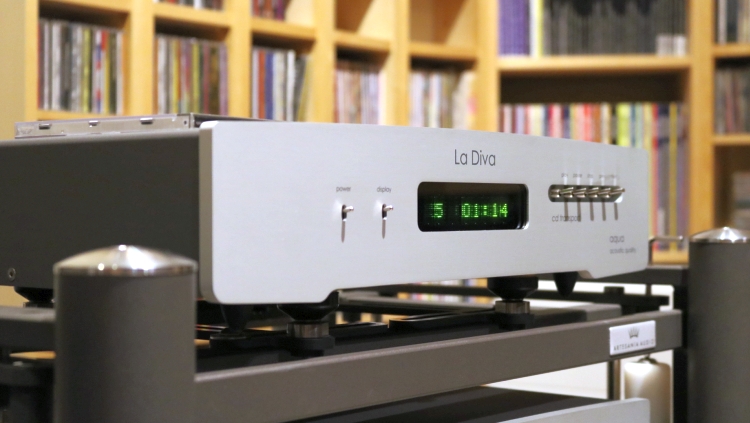
Diva Placement Experiments
Interestingly yet also annoyingly, the Diva sounds great when sitting atop the CH Precision C1 DAC when that component is itself coupled via Artesania Carbon arms to the Artesania Exoteryc rack’s top level. This bugs me because I don’t find the two components make a great visual match, and also because the big CH A1.5 power amp prevents me from comfortably operating the CD transport when in this position.
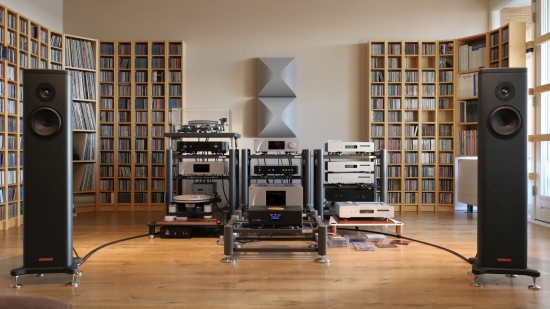
The C1 DAC is built from massive aluminum panels and has an extra-thick stainless steel bottom plate, and as a whole, its construction is massively inert, and apparently, that works well for the La Diva as well as the La Diva M2.
In search of finding a neater position for the Diva, I tried it on top of the Formula xHD DAC, supported in exactly the same manner as the C1. However, as I learned the hard way during my first experiences with the brand, you really shouldn’t use an Aqua component on top of another as this will create permanent stains in the bottom component’s Nextel finish. So, what we need is an intermediate piece of material.
On top of another Aqua component
For over a year, I have used the LinQ on top of the Formula, with Artesania Neoprene discs in between. With the incredibly robust and expressive sounding LinQ, that works marvelously well. In general, these Neoprene pads remove some of the music’s urgency, making bass stabs lose a degree of power and incisiveness. But otherwise, they have very little influence on the signal, and importantly, they allow the music to flow entirely freely.
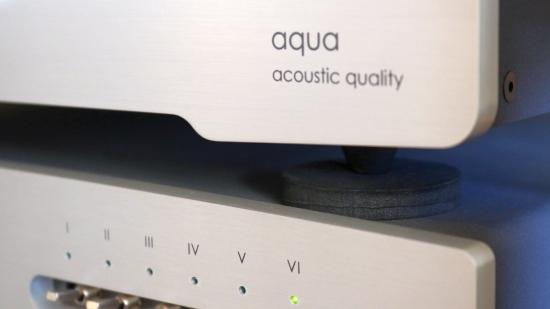
Above and below: Artesania Neoprene pads underneath the Aqua component feet
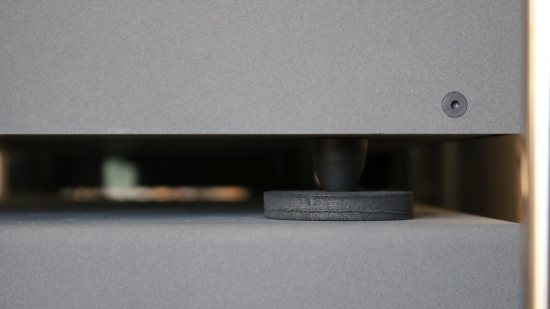
Experiments carried out with the original Diva on top of the Formula xHD DAC using Neoprene and small and large beechwood discs, stainless steel discs, and special bell-brass discs have brought interesting results.
Among the benefits was tighter bass with more incisiveness when going from Neoprene to the small beechwood discs, but this came along with a kind of pinched midbass and slightly nasal lower midrange that is not entirely natural or at least not as uncolored as placement on top of the C1.
Moving to the larger and thicker beechwood discs pretty much restored the balance but still sounded more “forced” than the direct C1 placement. The stainless steel discs provided an interesting alternative, producing a more linear and neutral sound than the beechwood discs, but this sounded a little forced and mechanical.
Finally, moving to the special bell-brass discs made by Ron Ploeger of Callas Audio, provided a very interesting alternative with similar neutrality and linearity as the stainless steel discs but with a touch of a golden glow in the midrange and just a tiny bit fuller bass, which was my preferred solution for the original Diva, when hard couplers had to be used.
Ultimately, though, I felt that you could always subtly hear the tiniest edge that was added by any of the hard underlay materials. In general, if the component must be placed on top of another Aqua component and so long as bass incisiveness is not the most important parameter, then the best couplers are still the Neoprene pads. That is, for the LinQ and the original La Diva. Do read on!
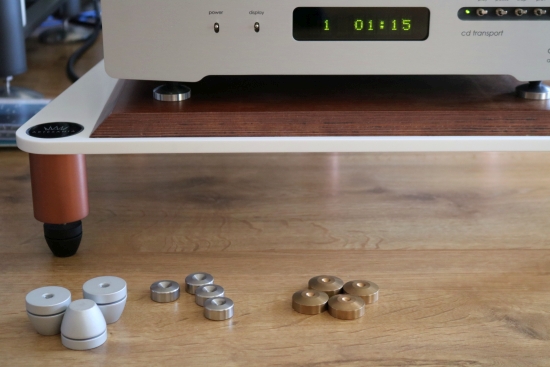
On a platform
The top surface of an Artesania Modular Floor platform (or the Modular Rack) is super-hard but nevertheless still susceptible to stains. As such, I always use intermediate materials when placing Aqua components or other devices with potentially oily substance-releasing feet on the platforms. Just as with placement on top of another Aqua component, the method with which this is done can also be used to carefully tweak the sound.
Since these Artesania platforms provide an inherently fuller and more sonorous sound, out of all the options, the bell-brass discs worked sublimely well for the original Diva as well as the Formula DAC, while I obtained the best balance in terms of neutrality and articulation for the slightly more romantic sounding M2 when using the stainless steel discs. Incidentally, the Finite Elemente Ceraballs (shown above left) reduced the fluidity and flow and thus were not a good match with either of the two Aqua CD transports.
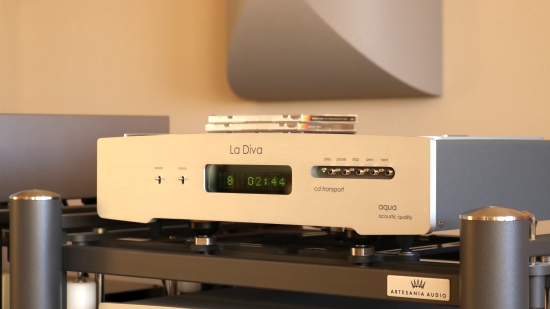
Directly on an Artesania Rack
In my experiments, most of the audio components that I owned or reviewed sounded best when placed with their bottom panel directly on the Artesania Exoteryc rack’s feet, bypassing the component’s own feet. And in these cases, the superlative solution is always to use the optionally available Carbon Arms with beechwood discs.
However, there are exceptions where components sound better when using their own integral feet. Recently, this concerned the Lejonklou Källa streamer, and the same is true for some of the Aqua components.
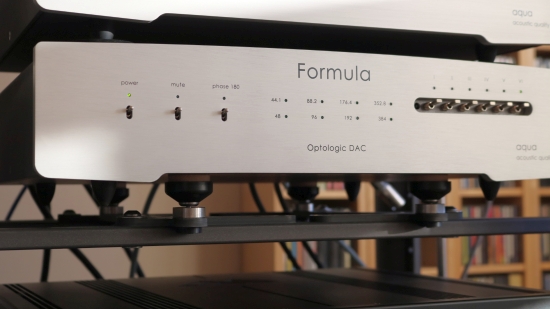
The Formula xHD DAC sounds more fluid and free-flowing on its own super-flexible cone-shaped viscous feet but more articulate and incisive on the Carbon arms. Ultimately, it sounds great either way, making it more a matter of personal preference. The LinQ, however, most definitely sounds best when using its own feet. When bypassing its feet with a hard coupling, even one on the Artesania Carbon Arms, it starts to sound overly controlled and restrained, and that’s why I can get away with using it on top of the Formula DAC.
The original Diva behaves similarly to the LinQ and is also best used with its own feet. It would be easy to assume that the Diva M2 would behave the same way, but as I found, it actually behaves more like the LinQ. By this, I mean that it can be used with its own feet (op top of a solid surface), as well as be placed directly on the Artesania rack’s feet, and sound great either way.
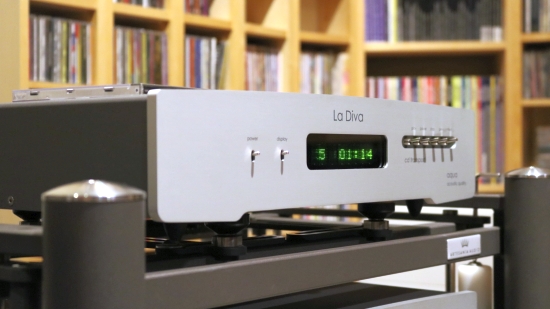
Conclusion
Ever since I was aware that a new model was coming, I had been awaiting its arrival with immense anticipation. Fortunately, the M2 delivers on its promise. It is not only a successor with a different CD mechanism but indeed a wholly different player. And along with its mechanical and electrical changes, the La Diva M2 also brings a couple of changes in the sonic presentation.
The La Diva M2 retains all the aspects for which I feel that the CD format still has the edge. These include the unequaled free-breathing sense of flow, the more organic imaging, and a superb level of refinement and air. Along with this, the M2 brings a newfound level of richness and tonal saturation and considerably wider and deeper soundstaging, compared to the original La Diva. If the original was lean, a little dry, and perhaps slightly analytical, the new M2 is smooth, harmonically rich, and slightly euphoric. And amazingly, the M2 brings this new level of organic richness along with an even higher level of refinement and low-level resolution.

More experiences with La Diva M2
External Links
Distributor for the NL/Belgium: Hexagon Audio
Manufacturer’s website: aquahifi.com
Read Also
Aqua Formula xHD DAC
Aqua Formula xHD v2 Output Board upgrade
Aqua La Scala mkII DAC
Aqua LinQ Network Interface

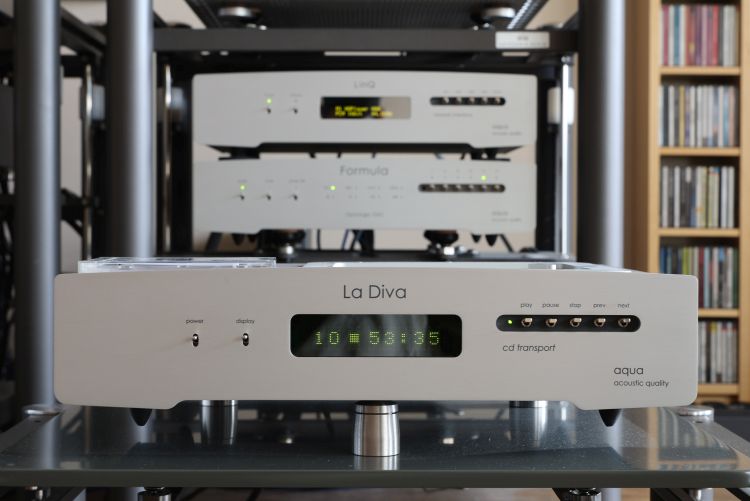
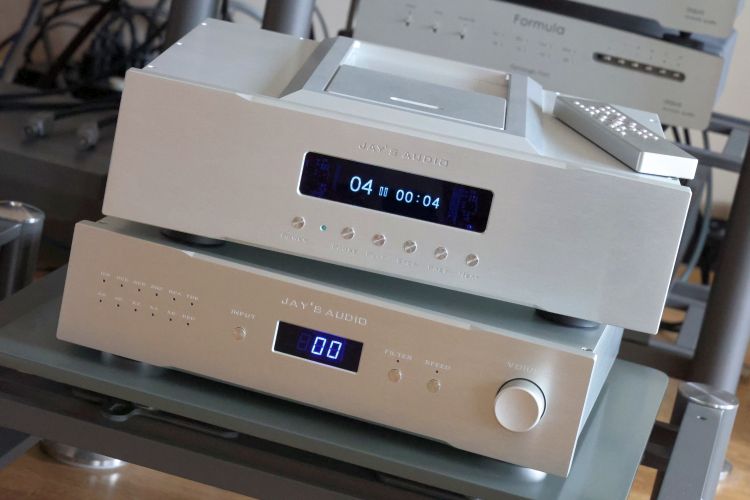
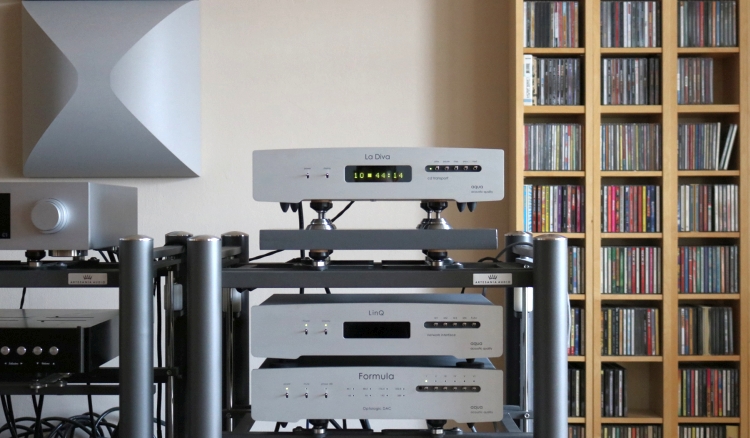
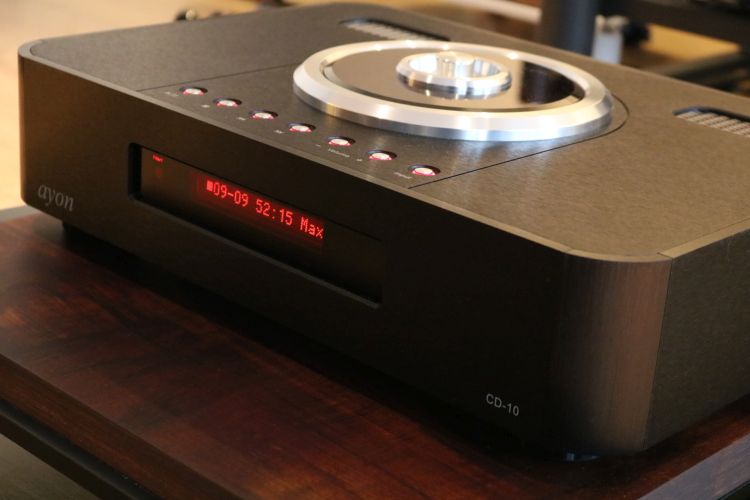
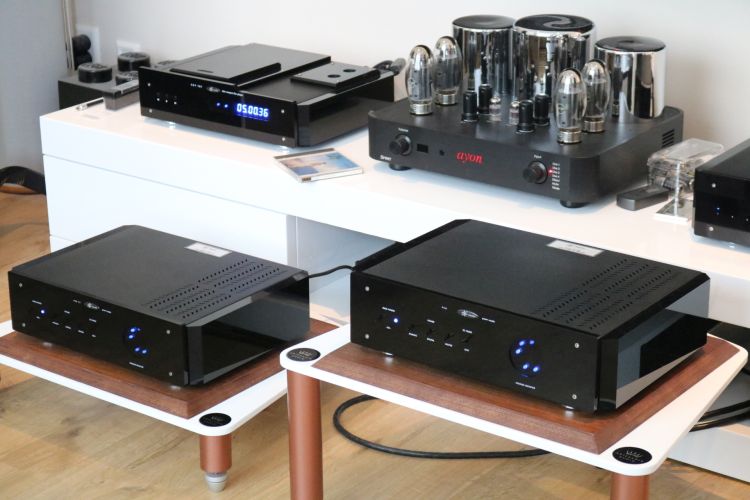
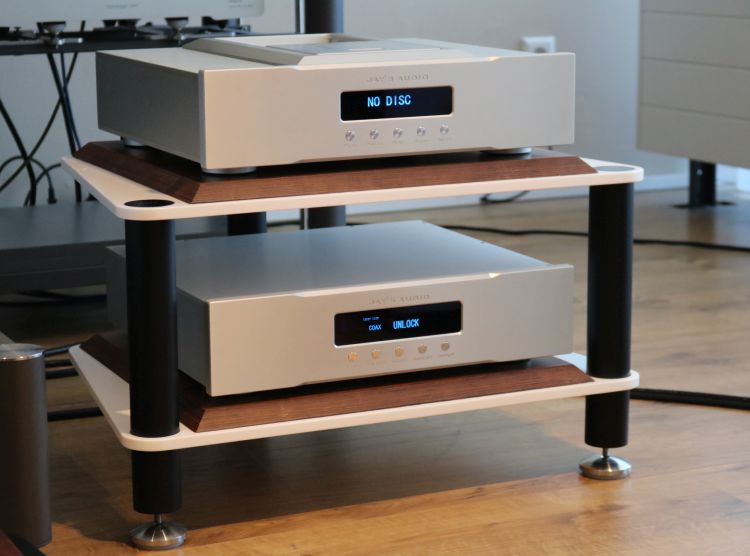
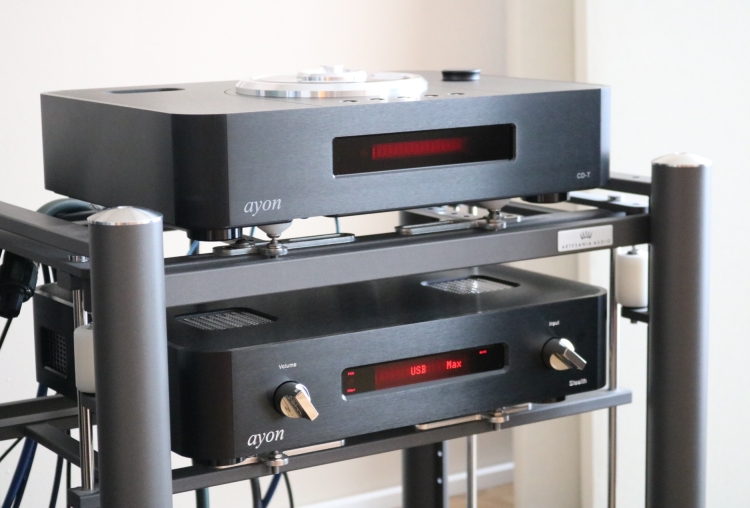
Hi Christiaan,
excellent review since you are valuing very much the emotional aspects of the playback with this device.
I also appreciate that the review is on “one” page, much better now.
And many congrats for your new job you mentioned on WBF 🙂
Matt
Hi Matt, thanks, and glad to hear you liked the review! Also, thanks for bringing the paging matter to my attention. Actually, -cough- I had forgotten to add the dividers. So sorry, but I’ve now put them in.
Christiaan,
I really prefer to have a review on one page than on several pages 🙂
Matt
And another inspiring review. When the Compact Disc is rediscovered will it be named as Polycarbonate? I would say, in any case, keep spinning! If you mention my name in relation to sound tuning, it is seen as a personal challenge, so keep an eye on your mailbox, because I am working on several variations on the Bells Bronze theme. Specially created for HFA. Patience.
Indeed! Let’s resume the good habit of bringing along some nice stacks of Polycarbonates to play at friends’ places!
Looking forward to future Bells Bronze products:-)
Hi Christiaan,
Great review! Gives me a lot of clarity regarding what the La Diva M2 sounds like.
A few things I’m curious about…
1) Have you had a chance to compare the M2 with other transports such as the Pro-ject RS2T which share the same StreamUnlimited mechanism? Do you find that there is a distinctive sonic signature there?
2) Curious if you found the La Diva M2 fatiguing? I’m considering purchasing it but fear that this might be the case.
3) Also, curious your thoughts on the how the La Diva M2’s sound and perhaps even the whole StreamUnlimited sound signature compare to the sound signature of the CEC transports? Does one sound generally more “analog” than the other because I’ve heard that term used to describe both the CEC brand in general and the M2 in particular.
Hi Ajay, alas, I have not heard the Pro-Ject. I know it uses the same mechanism but that is but one building block. Of paramount importance are also the clock, power supply, and output section. These matters can have a large influence on the sound of a player.
The Diva M2 most definitely does not sound fatiquing. It has the benefits of the classic CDM1 drives combined with great resolution and transparency. It sounds fluid, refined, and “analog” in the best sense of the word and it is relaxed whilst not going overboard in terms of creaminess or warmth.
I find that people use the word “analog” when describing a smooth, sweet, non-edgy sound. But they often go overboard with this. After all, real-life artists also do not sound creamy…;-) Anyway, the CECs I heard (I owned the Tl1x and heard a few others) sound smooth and free-flowing, but to me also a little too “analog”. They are not similar to a good LP record or reel-to-reel recording (which one should refer to as exemplifying analog), but are overly sweet, round, thick, and relatively slow. The TL1x actually sounded slower and less dynamic than classic CDM-1-based Marantz CD94 used as a transport.
If you crave that extra bit of smoothness and warmth, then there’s nothing wrong with that, but I would personally refer to it as “Romantic”. Usually, it is best to add this extra dose of romance in the DAC, preamp, or the analog cables. Anyway, that’s just my opinion:-)
Hi Christiaan, Thanks for the insights! I agree with you that the place to start adding in extra smoothness, warmth and the like would not be at the transport. Probably not even the DAC. I was thinking a tube preamp would probably be the best way. I mean, I assume it’s best — in theory — to bring as much resolution/detail into the chain upfront and then “soften” its edges (if necessary) later in the chain, than to sacrifice resolution/detail upfront because, by doing it upfront, it would be fundamentally unrecoverable down chain.
When one considers it from that standpoint, sounds like the CECs (at least the lower to mid-tier units I have been looking at) are likely inferior to the M2 on every meaningful count.
Your description of the CEC in your reply to me reminded me a bit of things you mentioned in your Jay’s Audio CDT3-Mk3 review. I was also considering that unit. Sounds like the Jay’s for you was also not at the level of M2, especially considering the proper role of a transport in the audio chain?
BTW, I love your reviews! Been following for a while. Can’t think of anyone else with quite as much insight into the CD medium — particularly extending into the present — as you!
Thanks for the praise, Ajay! Indeed, I would regard the CEC house sound (at least based on the TL1x that I owned) as sounding warmer, slower, rounder, less well-resolving, and less exciting than the Aqua Diva M2. Even so, the Diva M2 is never etched or dry. It remains on the fluid, gentle, and refined side. It is the best transport that I have heard so far.
Thanks! Just bought an M2 today – in no small part, on strength of your feedback. I will let you know how it goes!
That’s nice, Ajay! Indeed, do let me know.
BTW, would you mind giving me some advice: I am going to be going out from the M2 into a Mola Mola Tambaqui. It appears the only two common connections options would be s/pdif aes/ebu. I have neither cable type on hand because I prefer USB, generally. I will need to buy a decent cable. Of those two, would you have a genera preference in terms of sound quality? Thank you again!
The USB standard is not used with CD transports. Between AES/EBU and S/PDIF, I prefer and use AES EBU, and my brand of choice is Jorma Audio. The Jorma AES/EBU cables (and S/PDIF variant) are the most neutral, linerar, and accurate that I have heard. See my review on this site. For alternatives, please have a look at the other cable reviews that I did.
Thank you! Sorry, I misspoke. I have been using an Optical connection, which isn’t going to work on this case. Thank you for the suggestion! And yes I do recall that that Jorma has indeed been mentioned.
Ah, well, even if TOSlink was an option with the Diva M2, I would strongly suggest going for either S/PDIF or AES/EBU. Of course, you could also investigate Aqua DA Converters. The La Scala, for instance, is very special, and this then opens the possibility of using AQLink which is Aqua’s I2S implementation which is better than AES/EBU.
Will do! Thanks!
Hi Christiaan ,
It seems that Bricasti have released a new CD / SACD player (Drive) which could be very interesting to test and compare !
https://www.bricasti.com/en/consumer/m19.php
Best Regards
Pascal
Hi Pascal, your comment was in spam and I only found it now. Indeed, this player will be interesting to review. I will see if I can get one in for review.
Great review Christian, I have all three of the Aqua units (M2 Ladiva, Formula Xhd V2, & Lin-q) and find your assessment of the units mirrors my own experience. It must be something in Italy that rings my bell as I also have a full set of Audio Analogue Maestro SE preamp and a pair pure Class A SE mono power amps. They pair perfectly with a pair of Amphion Krypton 3X speakers + 6 stack REL S510 subs. my music server is an Uber custom build that with the LinQ compares favorably with anything I have heard at any price. I find your writing/reviewing style very enjoyable and informative so thankyou.